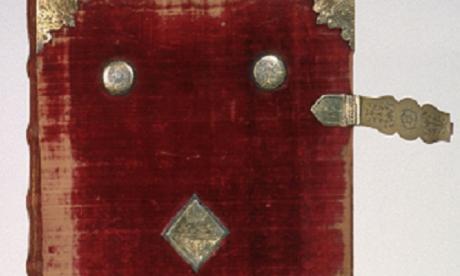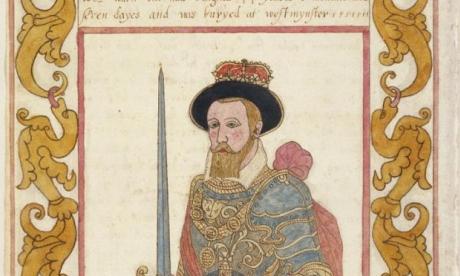2011 marked the 400th anniversary of the publication of the King James Bible, the most frequently printed and one of the most widely read books in English. The rich language of this 1611 translation has influenced diverse cultures around the world in many ways and continues to do so today. A thoughtful examination of this book gradually leads visitors to consideration of the creative uses that writers as diverse as John Milton, Phillis Wheatley, Norman Mailer and Toni Morrison have made of it. Orators from Abraham Lincoln to Rev. Martin Luther King Jr. have paraphrased it. Then there are the artists: musicians from George Frideric Handel to today’s Christian rock artists, illustrators from medieval monastic illuminators to cartoonist Charles M. Schultz. The Bible has been a focus of recent Hollywood films such as The Book of Eli. The printing history of the King James translation contains curiosities; we learn about typesetting mistakes that lead to such notoriously flawed editions as the “Wicked Bible.”
With the assistance of an NEH Chairman’s Special Award in 2010 to the Folger Shakespeare Library for the project Manifold Greatness: The Creation and Afterlife of the King James Bible two American rare book libraries have mounted customized variations of a major international exhibition which originated at Oxford University’s Bodleian Library in April 2011. Washington, D.C.’s Folger Shakespeare Library displayed its version of the show from September 2011 to January 2012, and the Harry Ransom Center at University of Texas at Austin is currently hosting the exhibition with added related holdings from its collections through July 29, 2012.
But what if you don’t live in Austin or Washington? Thanks to the same NEH award, a smaller panel version of Manifold Greatness is traveling to college and public libraries in thirty-two states under the auspices of the American Library Association. At each of forty sites, NEH funds enable the host institution to conduct a variety of exhibit-related public programs such as scholar lectures and reading groups. In this way, cities from Spokane, WA, to Tuscaloosa, AL, to Colchester, VT, are able to encounter some of the main ideas of the original Oxford show.
One intriguing aspect of this project is the way in which newer digital communication technologies have been enlisted to foster appreciation for the history and cultural influence of this seventeenth-century printed book. Nowadays it is standard practice for major exhibitors to mount rich companion websites with their exhibitions. The Folger Library (http://www.folger.edu/Content/Whats-On/Folger-Exhibitions/Manifold-Greatness.cfm ) and the Ransom Center http://www.hrc.utexas.edu/exhibitions/2012/kingjamesbible/ have both done so. A surprising exhibit item is described at http://www.elvis.com/news/detail.aspx?id=5730. But the Manifold Greatness project has achieved an even more multifaceted digital presence. For Twitter postings go to @ManifoldGr8ness. Facebook followers can visit www.facebook.com/manifoldgreatness. Images from some of the traveling sites can be seen at www.flickr.com/photos/manifoldgreatness. There is even a YouTube channel for fifteen related videos at http://www.youtube.com/user/ManifoldGreatness. Robert Barker, the King’s printer in 1611, would be amazed. But he might well see the relationship between the historic job he did and our current ways of disseminating information to those who want it.








